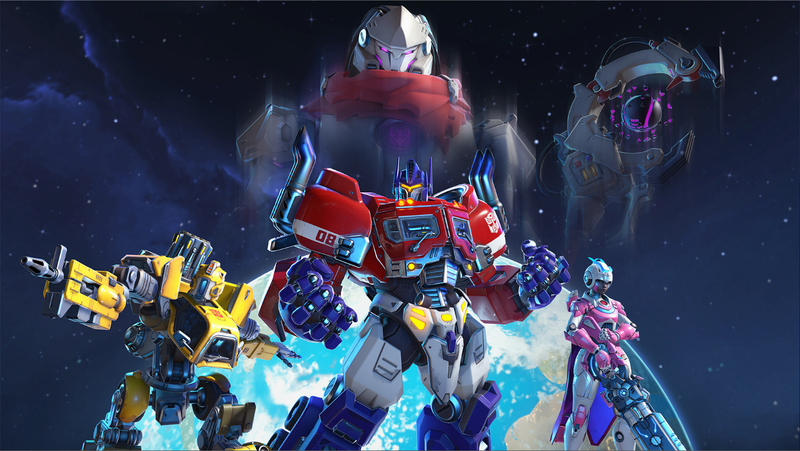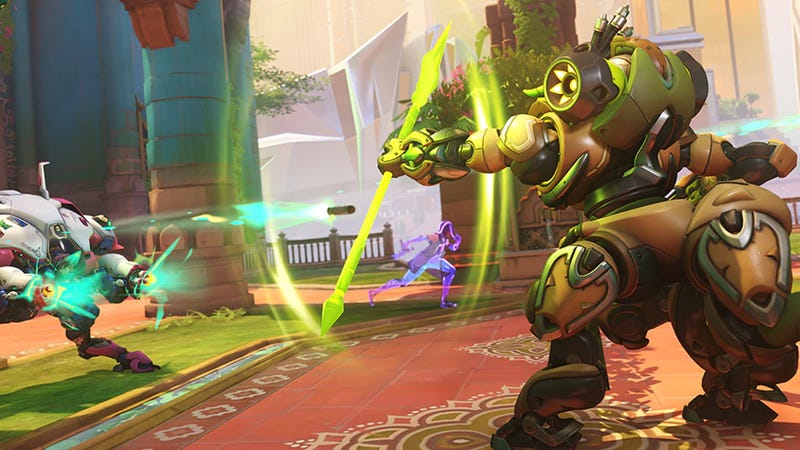Today Blizzard released a lengthy Overwatch 2’s Take addressing the Reinhardt-sized elephant in the room: whether or not the sequel should return to the game’s original 6v6 format. Written by game director Aaron Keller, the massive blog post draws on Overwatch 1 and the major changes made throughout its life and up to the transition to 5v5 for the sequel, explaining Blizzard’s thought process behind the franchise’s biggest overhauls. But by the end of the nearly 4,000-word blog post, it’s clear that the team is still trying to define Overwatch 2, which brings us back to the question: Why does it exist in the first place?
Overwatch 2 was originally meant to exist alongside the original game, bringing new PvE elements and a shared multiplayer ecosystem to both titles. This changed drastically before its launch in October 2022, so much so that Overwatch 1 was completely shut down and replaced by the sequel. The promised PvE modes were dropped and turned into something much less interesting, which we don’t get to see much of anyway, but its biggest controversy was the switch to a 5v5 team composition rather than the 6v6 structure that defined the game for six years .
Overwatch 2 problem
As Keller describes in the blog post, Overwatch has undergone three major gameplay changes since its launch in 2016: Hero Limits, which only allowed one player to play as each individual hero, rather than being able to assembled a team of six Genjis; Role Queue, which helped balance matches by forcing a 2-2-2 format (two tanks, two DPS, two supports) and queue times; and 5v5. All of these changes have led to where we are today, a place that many feel is stagnant and unpleasant.
Role Queue ensures that you don’t play competitive matches without a healer (which was incredibly frustrating in the original game), but Keller admits that this consistency made Overwatch “start to feel the same.” I’ve played hundreds of hours of competitive Overwatch 2 and so many of my matches have blurred together into a string of sameness. “Could there be an intermediate version that mitigates the original problems without completely solving them and also isn’t as responsive as our current role queue system?” Keller is surprised.
Unfortunately, the switch to 5v5 also somewhat flattened the gameplay of Overwatch 2. “The world of 6v6 can have really high, highs, but very low, lows,” Keller wrote. “One of the design goals of 5v5 was to try to raise that floor, even if it was at the expense of some of those high moments.” The 5v5 change removed the secondary tank role, which helps prevent matchups and drastically reduces queue time, but also fundamentally changes how every single role is played.
Support players, who are no longer tasked with keeping two massive tanks afloat, need to be more aggressive, adding their damage to an already high-damage deck thanks to dual DPS characters. And the tank, instead of having a secondary, or off-tank, to support them, is now the biggest hero on the field and more likely to carry the brunt of any enemy player’s damage and utility. Tanks now play to exist, to stay alive, rather than to make games.
“Having two [tanks] allowed one to focus on protecting his backline while the other stayed on the ground or pushed into the enemy team,” Keller wrote of 6v6. “The tank role had a lot of depth to understanding how to work with the other tank in team.” And as Overwatch players have pointed out, so many of the existing tank kits are tailored for 6v6 play, which too often makes off-tank picks like Wrecking Ball completely inappropriate, especially in competitive matchups.
The battle to balance tanks for 5v5 gameplay has been going on for almost two years. In June, Blizzard admitted that tanks were miserable to play after a passive damage hero weakened healing and made them feel like they were made of glass, and a later tank-focused patch was heavily patched, made them very powerful.
“The past year and a half has shown us that there are problems with balancing tanks even for 5v5. [as 6v6]”, said the blog post. No shit.
Five versus six
The crux of what many players believe is the problem with 5v5 swapping is that most of Overwatch 2’s characters, maps, and modes are built for 6v6 play. Some suggest that Blizzard, instead of making big changes like nerfing shields (which would render Overwatch 1’s problematic metas like pirate ships useless), the team just retired the second tank. The removal of the second tank takes away the freedom of choice for tank players and robs us of the variety of play styles and approaches that come from finding the perfect balance between the two tanks.
It also puts more pressure on supports to keep that particular tank afloat, while ensuring that DPS players have to pick specific heroes to counter the enemy’s lone, boosted tank. Not to mention the burden the lone tank player has to carry – if they can’t keep up with the enemy tank, matchups are extremely unfun for them and their team.
Warring factions of team composition within the Overwatch community are nearly split down the middle, as evidenced by a March poll by former OWL esports player Jake Lyon, in which 51.9% of players said they preferred 5v5 to 48.1% of backers. original 6v6. This almost equal split tells me one thing: this is more about personal preference than what is objectively better, as there are flaws in both formats. As Keller blogs, “Our players have different opinions and preferences about the ideal number of players in an Overwatch match, and so does our team.”
For more flexible top-down players, 5v5 is a perfectly fine experience, as they can easily switch between any character in their role-list to ensure the matchup is successful. For people like me, a former one-trick moira who expanded her support list to five or so strong picks, 5v5 can feel overly restrictive – and therefore frustrating. As Keller and others have made clear, there are pros and cons to both versions of Overwatch’s main multiplayer mode. There is no single, simplistic solution to this problem that Blizzard has inadvertently created.

Now what?
Keller’s blog post is clear: Blizzard is “focused on making 5v5 the best experience it can be.” But the team is also “open to reevaluating our decisions based on your actions and feedback.” As we’ve seen in the last year or so, Blizzard has been experimenting with gameplay changes in Quick Play: Hacked mode, including increasing the speed of capturing objectives and moving loads (a change that ultimately kept the game). . An upcoming Quick: Hacked game will experiment with team compositions in ways “that aren’t as rigid as group composition, but not as loose as Open Queue.” But what about 6v6?
“We’re looking at hosting a series of events to try out different core team composition formats in Overwatch 2,” promises Keller. He doesn’t describe what those events will be or what they will entail, but I don’t envy the work Blizzard will have to do if they plan to implement 6v6 in any form. As much as I and other disgruntled Overwatch players would like to think it’s as simple as offering Quickplay 6v6 and 5v5 and Competitive modes, there’s a lot going on under the hood that could go wrong.
Overwatch 2’s updated UI and improved graphics can crackle and strain with the addition of two more heroes in each match, and the changes made to hero kits can feel either perfectly balanced or extremely sparse, depending on whether you are in a 5v5 or 6v6 match. And Keller expresses concerns about “opening a Pandora’s box” when it comes to queue time, which is likely to increase with the addition of an extra player to your squad. “The team wasn’t able to solve this problem before,” he admits. But would the 6v6 faithful care that they have to wait longer to get their favorite game mode back?
This latest Director’s Take promises that “this is not the last time [Blizzard will] let’s get into 5v5 or 6v6”, so I’m sure the debate will continue for many months to come. I just want to get out of gold in support please.
